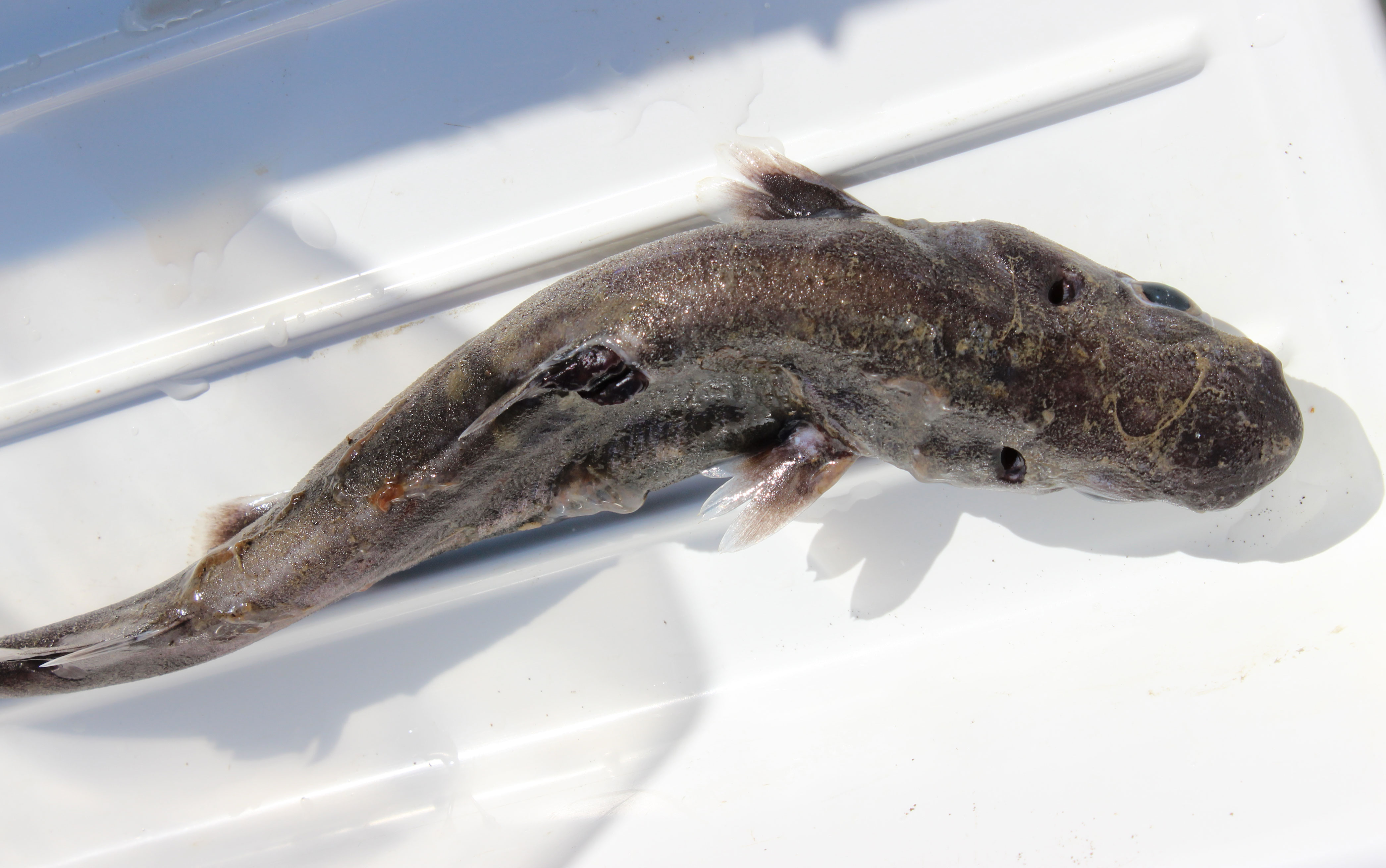Topic: Velvet belly lanternshark

Velvet belly lanternshark is Norway’s smallest shark
Photo: Erling Svensen / Institute of Marine Research
The velvet belly lanternshark has a dark velvety skin
Photo: Erling Svensen / Institute of Marine Research
As with other cartilaginous fishes, the lanternshark has a network of electrical sensors on its head called ampullae of Lorenzini
Photo: Erling Svensen / Institute of Marine ResearchPublished: 14.08.2024 Updated: 25.02.2025
The velvet belly lanternshark (Etmopterus spinax) is a member of the family Etmopteridae, which includes around 50 bioluminescent deepwater sharks that are found worldwide. Their ability to produce light from their abdomen is likely an adaptation to deepwater habitats where there is little to no light, as it camouflages their silhouette from potential predators from below (when viewed against brighter surface waters) and above (when viewed against the darker deep waters). This strategy is also adopted by other species, such as mesopelagic lanternfishes.

The velvet belly lanternshark is Norway’s smallest shark (maximum 60 cm). It is widely distributed in the eastern Atlantic and is abundant along the Norwegian coast and in deep fjords. The species occurs between 70 and 2000 m deep, but is most commonly found between 200-500 m and associated with soft-bottom habitats. The velvet-belly lanternshark is easy to recognize: its skin is dark and has a velvety texture (hence the name), it has a spine anterior to each of two dorsal fins, and like other member of its family it lacks an anal fin. This shark feeds on a variety of prey items including crustaceans, small fish and cephalopods. It is ovoviviparous, giving birth to approximately 5–20 live pups per litter, which are about 12–14 cm in size.
On occasion, one can observe velvet belly lanternsharks infected with a rare parasite, Anelasma squalicola. A. squalicola is one of few barnacles known to have adapted from a substrate-attached filter feeding strategy (common in intertidal zones) to a parasitic strategy. This species has specialized on parasitizing sharks in the Order Squaliformes (which includes Etmopteridae), especially the velvet-belly where it often attaches itself at the base of the dorsal or pectoral fins to feed on its host’s blood and tissue.

The velvet belly lanternshark is of little commercial value, but is often caught as by-catch in a variety of fisheries. As with many other cartilaginous and deepwater fishes, it is slow-growing and matures late.
